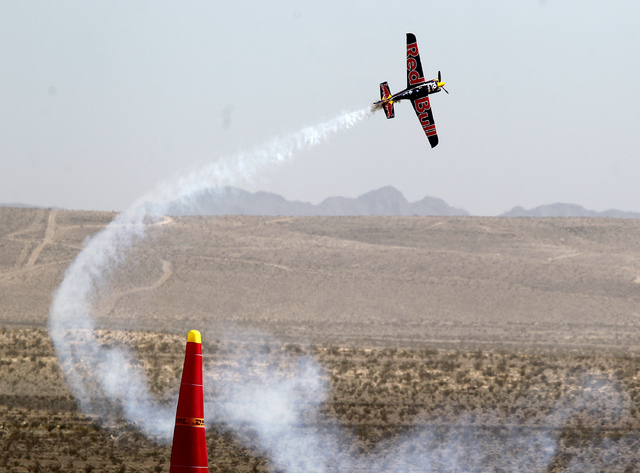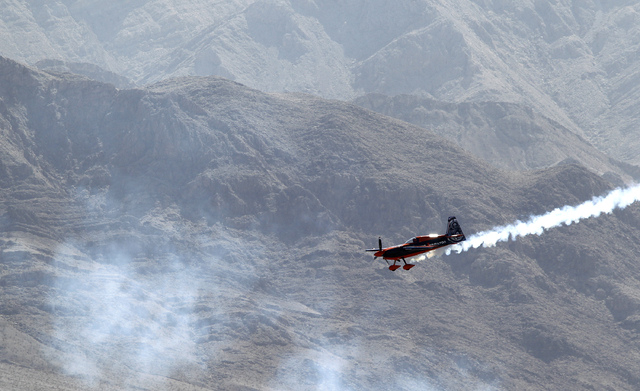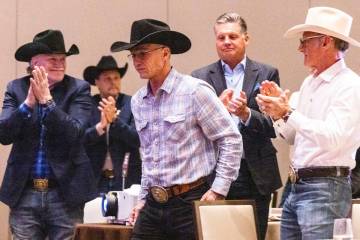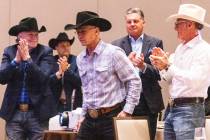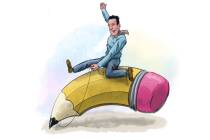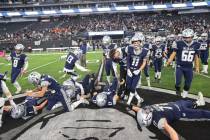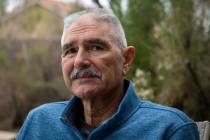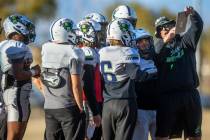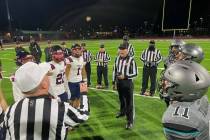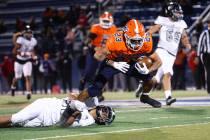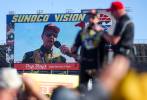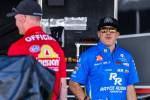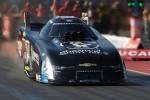October winds take air out of Air Race World Championship
In the “Facts and Stats” section of the official Red Bull Air Race Las Vegas media kit an entire page is dedicated to the pylons that mark the course in the manner gates mark the course in Alpine skiing, only the air race pylons are 82 feet tall.
“STABLE IN ALL WEATHER CONDITIONS” it says in red capital letters under the heading Fact 6 (of 10).
Perhaps it’s time to revise the official media kit.
Brisk northern winds wreaked havoc with the inflatable pylons, causing a long delay and ultimately the cancellation of the penultimate race of the 2014 Red Bull Air Race World Championship at Las Vegas Motor Speedway on Sunday.
The air race pilots were as deflated as those pylons. Were the crowd not hopped up on mass quantities of Red Bull, it probably would have been deflated, too.
Pete McLeod, the 30-year-old Canadian pilot who grounded himself before his first head-to-head elimination run due to the blustery conditions, was declared the winner based on Saturday’s qualifying times.
Long-time observers of the local motorsports scene were reminded of the hydroplane races they used to run on Lake Mead this time of year. Brisk winds wreaked havoc with the thunderboats, too, and it wasn’t long before Las Vegas was dropped from Miss Budweiser’s schedule.
They might call the wind Maria in those Broadway musicals. Out here on race weekend, they just call it a Debbie-sized downer.
“This is a little irregular,” the British announcer said on the international TV feed as the pylons continued to blow about like Marilyn Monroe’s skirt over that subway grate.
The announcer said gusts of 24 aeronautic knots were recorded, which is about 28 mph. You can catch a pop fly in wind like that, and normally you can fly these racing planes in that kind of weather, too. Apparently, you can’t keep inflatable pylons from wavering and deflating and smacking into the racing airplanes at speed, regardless of what it says in the official media kit.
“A soft pylon can be very dangerous to the pilot,” said McLeod, the youngest stick man on the circuit, and perhaps the most sensible one, too.
McLeod was the only air racer who did not go up during the first round. Well, actually, he did go up, but then he thought better of it because of the wind and those soft pylons. He brought the bright red No. 84 plane in for a landing before the clock could be started.
With the wind rocking the nimble racing aircraft to and fro, it sort of looked like Capt. Sully Sullenberger trying to land US Airways Flight 1549 in the Hudson River.
“We’re on the edge all the time, and it’s risk management,” McLeod said in the hangar, looking slightly frazzled. “The conditions have to be right for me to go up there.”
The first of three scheduled rounds of head-to-head runs was fraught with wind-aided turmoil.
England’s Paul Bonhomme, the championship leader coming into Round 7, was grounded for the rest of the day when he exceeded the G-force climbing limit; Hannes Arch of Austria, second in the championship, took out two pylons, or they took out him; Martin Sonka of the Czech Republic was penalized for flying too fast into the headwind at the start.
Peter Besenyi of Hungary, the guy who came up with the concept of inflatable air-racing pylons, was disqualified for flying outside the course boundary. Besenyi tried to make a tight turn and nearly was blown into the airspace above Las Vegas Boulevard.
It was then that young McLeod decided not to tempt the air racing gods.
The few clean runs were more than three seconds slower than those from Saturday when winds were docile.
As more pylons continued to deflate and the wind picked up again, the TV feed in the press box was switched to the Cowboys-Seahawks game. Not even the international air racing press seemed to mind.
I wonder if Pete McLeod was watching down in the hangar when the official announcement came there would be no more flying on this day and that he was the race winner.
“It’s racing, it’s aviation, it’s weather,” shrugged Matthias Dolderer, the German pilot, before being awarded third place based on Saturday. “We have to live with it.”
You don’t have to crash and burn with it, or at the very least be penalized by it, not when there will be other days when the wind doesn’t blow like Maria or whatever.
I think that was what Pete McLeod was trying to say before those 80-foot pylons started falling down and he was declared the youngest winner in series history.
Just before they handed the trophy to the Canadian pilot, a fire broke out behind the Earnhardt Terrace of the big oval. Thick black smoke, driven by the wind, billowed out over the hangar and the muted podium celebration. Turn 4 looked like those old Indianapolis 500 films when the cars ran on gasoline and sometimes would crash and burn.
Initial reports were that a refrigerated tractor-trailer had caught on fire.
It might not have been an ideal conclusion to the day, but it seemed like a fitting one.
Las Vegas Review-Journal sports columnist Ron Kantowski can be reached at rkantowski@reviewjournal.com or 702-383-0352. Follow him on Twitter: @ronkantowski.





